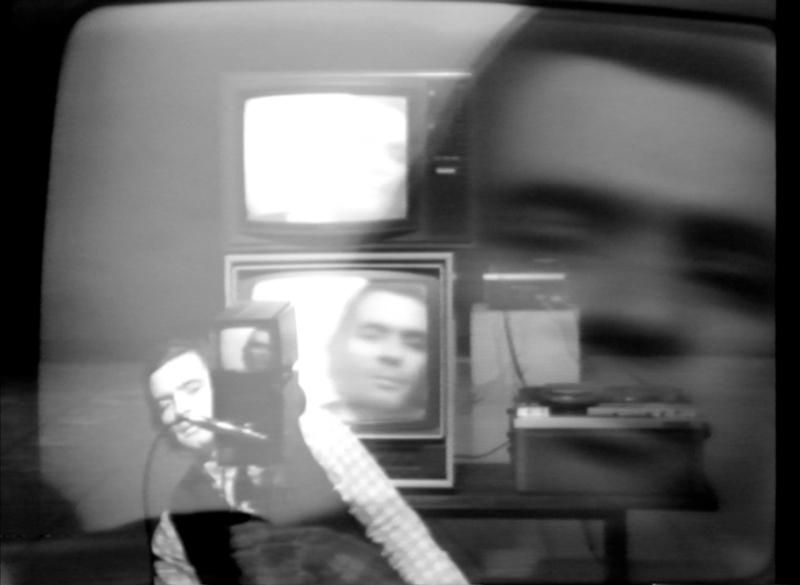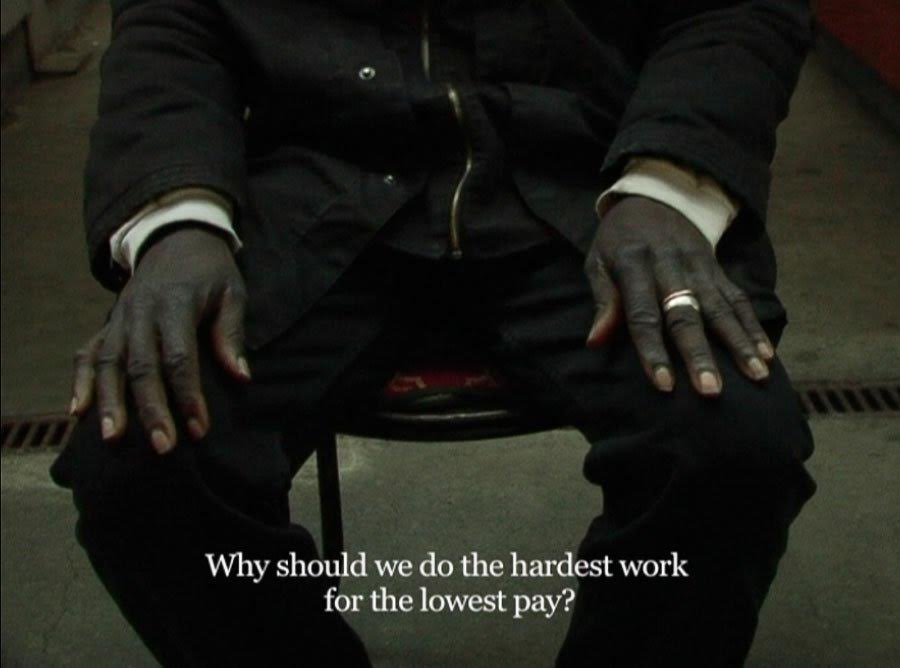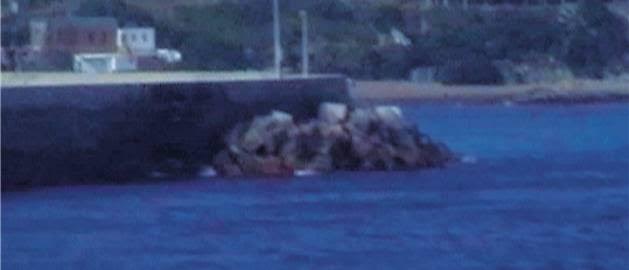
The use of video in art is closely linked to experimental music; the spoken word, however, appears extraneous to original video art. In fact, it is well known that many of the pioneers of art video come from the world of electronic sound experimentation: from Nam June Paik and Bill Viola to Robert Cahen, for example, who learned their trade in the electronic music workshops of the sixties and seventies. As a consequence, art video prefers the silence, long shots and fixed camera which are the classic stylistic markers of the minimalist, conceptual approach, where the metalinguistic dimension prevails and thus the subject of the work coincides with the techniques used to film it.
The spoken word, then, has long been identified with mass communication and narrative, in other words it is laden with the ballast of meaning, functionality: it is too prosaic, reassuring or indeed literary or theatrical to fit into the sphere of experimental video. Unless it is in a tautological sense, as used, for example, by Dan Graham, who describes what he sees in his famous Performer/Audience/Mirror (1975); or Vito Acconci in Home Movies (1973), describing his works to an imaginary interlocutor, but addressing a video camera and thus, indirectly, the audience.
In the same decade, Martha Rosler’s Semiotics of the Kitchen (1975) stages an improbable gendered ABC in a modern kitchen. In alphabetical order, Rosler – filmed with a BN fixed camera – names each kitchen utensil and mimes its use with increasing intensity and violence. But in this demonstration there is no transformation of food, no dishes are prepared: it is all done in the symbolic register to which the female is traditionally relegated. Finally, for the last six letters of the alphabet, even the objects used as props in this ironic domestic lexicon disappear. Rosler uses her own body to make the shapes of the letters, armed with disturbing sharp knives. In this instance the language of words is reduced to its most abstract and apparently scientific form, the alphabet, but even this rarefied universe is rendered strongly subjective: the protagonist is a woman, who uses first the objects linked to her role as wife and mother, and then her own body, to form the letters of the alphabet.

The analytical angle also informs the work of Michele Sambin, one of the most systematic and prolific Italian artists in experimental video. Sambin – who since the seventies has worked at the Cavallino Gallery in Venice, where Paolo Cardazzo established a pioneering video production facility – originally studied electronic music, and his singular video performances are often based on time-lapse, soft-focus and echo effects which influence not only the image but also the sound itself.
From 1977 onwards, Sambin introduces the spoken word as well as music in his soundtracks: predominantly phonetic at first, but gradually adding meaning. This is the case with both Il tempo consuma (1979) and Autointervista (1980). In Il tempo consuma, Sambin illustrates the progressive weakening of image and word by the simple effect of repetition, in other words the material erosion of the magnetic tape subjected to video looping. Meanwhile, in Autointervista, meanings are subtly ironic, particularly with regard to the world of art, in which the artist suffers a certain amount of distancing, or indeed invisibility[1].
It is clear that the video interview form has much in common with the methods used in TV news reporting, whether the interview is real, with documentary purposes, or fictitious, like Michele Sambin’s versions or those of Danielle Jaeggi. The latter sometimes imitates the format of the hea-and-shoulders news shot, but uses it to tell her own story; alternatively, in the 15-minute film Mon tout premier baiser (1984), having traced the man with whom she had her very first kiss, she interviews him under the guise of a TV journalist interested in his work in nuclear physics, but almost immediately reveals her real identity and tries to find out whether he has an equally vivid and detailed memory of their teenage experience. These are works in which the subject matter addressed, more than anything else, overturns some of the characteristics of the television format by introducing intensely subjective and biographical elements. The voice is that of the protagonist in the frame, the creator of the video herself, but at the same time it is perplexing, because she pretends to be something she is not, presenting herself as a journalist when in fact she is playing herself[2].

Further confirmation of the fact that the human voice in video, and dialogue in particular, prefers to be separated from a naturalistic correspondence with the image – predominantly the preserve of narrative cinema or television – can be found by concluding this excursion among artists who have used voice and the spoken word in innovative ways in experimental video by mentioning the young Moroccan-French video artist Bouchra Khalili. In 2012-13 she made The Speeches Series, a video trilogy, in which the first chapter is dedicated to language, the second to citizenship and the third to the proletariat.
In the first of these pieces, the artist interviews five immigrants living in Paris, whom she invites to translate, commit to memory and then repeat fragments of famous texts and speeches by authors such as Malcom X, Aimé Cesaire and Edouard Glissant, all exponents of thinking on creolisation and black identity. The choice of authors in itself is indicative of the issues addressed in the trilogy. From a formal point of view, the video is distinctive for its structure of a fixed frame focused on part of the speaker’s body, never showing the face: the result, once again, is anti-naturalistic. This device had also been used in her previous work, Straight Stories (2006-8), about people living near the Straits of Gibraltar. The conversations with those wishing to cross the straits and come to Europe, or who have already done so, speak of dreams and disappointment, difficulties and ambitions; while the camera circles obsessively, never focusing on the speakers, but mapping out a watery horizon as if land will never be reached. …to be continued…
[1] Cf. Michele Sambin. Performance tra musica, pittura e video, edited by S. Lischi and L. Parolo, Padua 2014; extracts of most of the artist’s video works can be viewed on www.michelesambin.com/archivio
[2] Cf. R. Bellour, Fra le immagini. Fotografia, cinema, video, Milan 2007 (originally published in Paris, 2002).
images (cover 1) Michele-Sambin, «Il-tempo-consuma», 2011 frame (2) Bouchra Khalili, «The Speeches series», 2012-13 (3) Bouchra Khalili, «Straight Stories», 2006-08







































